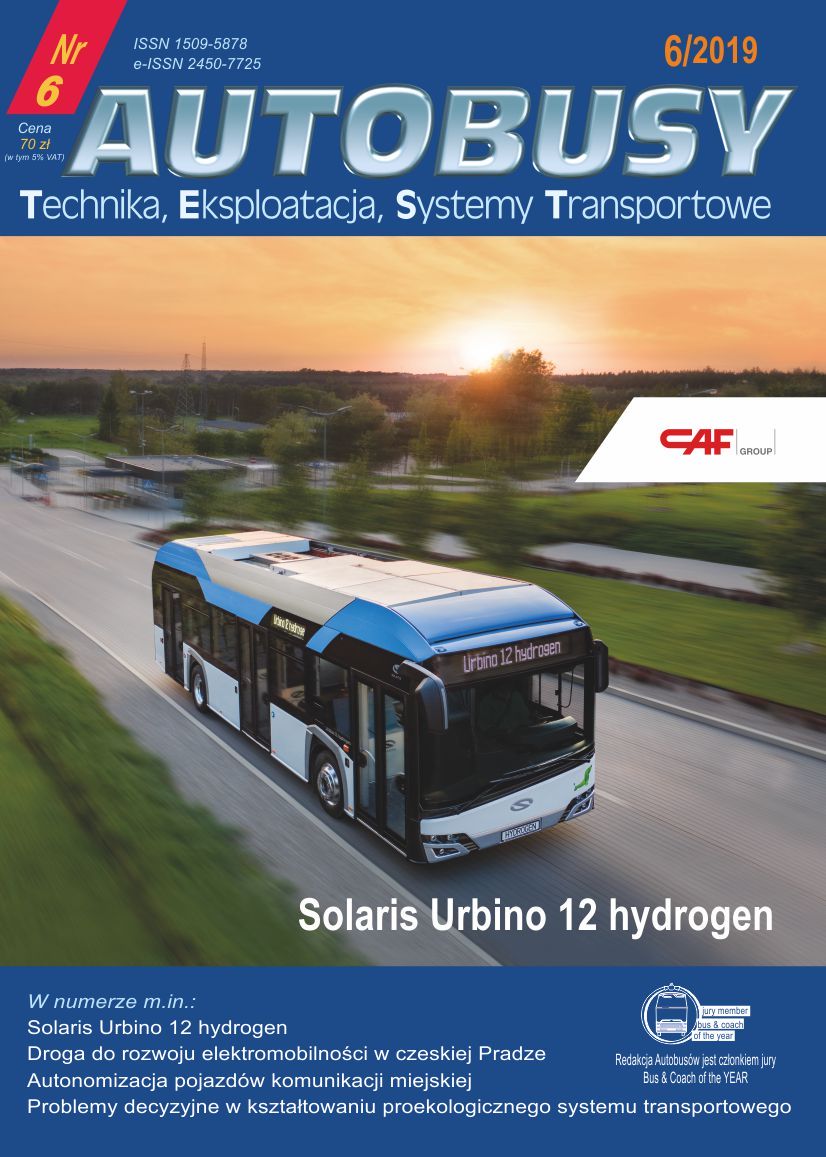The influence of the driving style according to the principles of eco-driving on the emission of toxic substances from a light utility vehicle
DOI:
https://doi.org/10.24136/atest.2019.121Keywords:
driving style, eco-driving, road tests, exhaust emissionsAbstract
The article presents the results of measurements of exhaust emissions of commercial vehicle in real traffic conditions. The aim of this study was to determine how the driving style affects on the exhaust emissions from vehicle engine. The determinants were the measurements of the concentration of main toxic substances emitted to the atmosphere from the power unit of the tested vehicle. In the measurements a portable exhaust emission analyzer was used (PEMS type).
Downloads
References
Casanova J., Barrios C., Espinosa F.: Capability of on-board emission measurement systems for driver behavior assessment. International Conference on Transport and Environment: A global challenge, Technological and Policy Solutions, Milan, Italy, 19–21 March 2007.
Casanova J., Margenat S., Ariztegui J.: Impact of driving style on pollutant emissions and fuel consumption for urban cars. Pro-ceedings of the 1st International Congress of Energy and Envi-ronment Engineering and Management, Portalegre, Portugal, 2005.
Merkisz J., Pielecha J.: The on-road exhaust emissions character-istics of SUV vehicles fitted with diesel engines. Combustion Engi-nes/Silniki Spalinowe, No. 2/2011 (145), pp. 58–72.
Merkisz J., Pielecha J., Radzimirski S.: Emisja zanieczyszczeń motoryzacyjnych w świetle nowych przepisów Unii Europejskiej. Wydawnictwa Komunikacji i Łączności, Warszawa 2012.
Regulation (EC) No 510/2011 of the European Parliament and of the Council of 11 May 2011 Setting Emission Performance Standards for New Light Commercial Vehicles as Part of the Community’s Integrated Approach to Reduce CO2 Emissions from Light-Duty Vehicles. OJ L 145/1.
Rubino L., Bonnel P., Carriero M., Krasenbrink A.: Portable emission measurement system (PEMS) for heavy duty diesel vehicle PM measurement: the European PM PEMS program. SAE Technical Paper Series 2009-24-0149.
Shahinian V.D.: SENSOR Tech-CT Update Application Software for SEMTECH Mobile Emission Analyzers. Sensors 4th Annual SUN (SEMTECH User Network) Conference, 22.10.2007.
Ubysz A.: Poszanowanie energii w pojazdach samochodowych. Część 2: Dynamiczne charakterystyki ogólne ge i ej w pojeździe. Wydawnictwo Politechniki Śląskiej, Gliwice 2011.
Ubysz A.: Poszanowanie energii w pojazdach samochodowych. Część 3: Optymalizacja zużycia paliwa w samochodzie – akomodacja (a*v). Wydawnictwo Politechniki Śląskiej, Gliwice 2011.
Vermeulen R.J.: The effects of a range of measures to reduce the tail pipe emissions and/or the fuel consumption of modern passenger cars on petrol and diesel. TNO report, IS-RPT-033-DTS-2006-01695.
Walsh M.: Global trends in motor vehicle pollution control: a 2011 update. Part 2. Combustion En-gines/Silniki Spalinowe, No. 3/2011 (146), pp. 53–58.
Worldwide Emissions Standards. Passenger Cars and Light Duty Vehicles. Delphi 2012/2013 (www.delphi.com).
Worldwide Emissions Standards. Heavy Duty and Off-Highway Vehicles. Delphi 2012/2013 (www.delphi.com).
autonews.iogloszenia.com, dostęp z dnia 27.03.2013.



